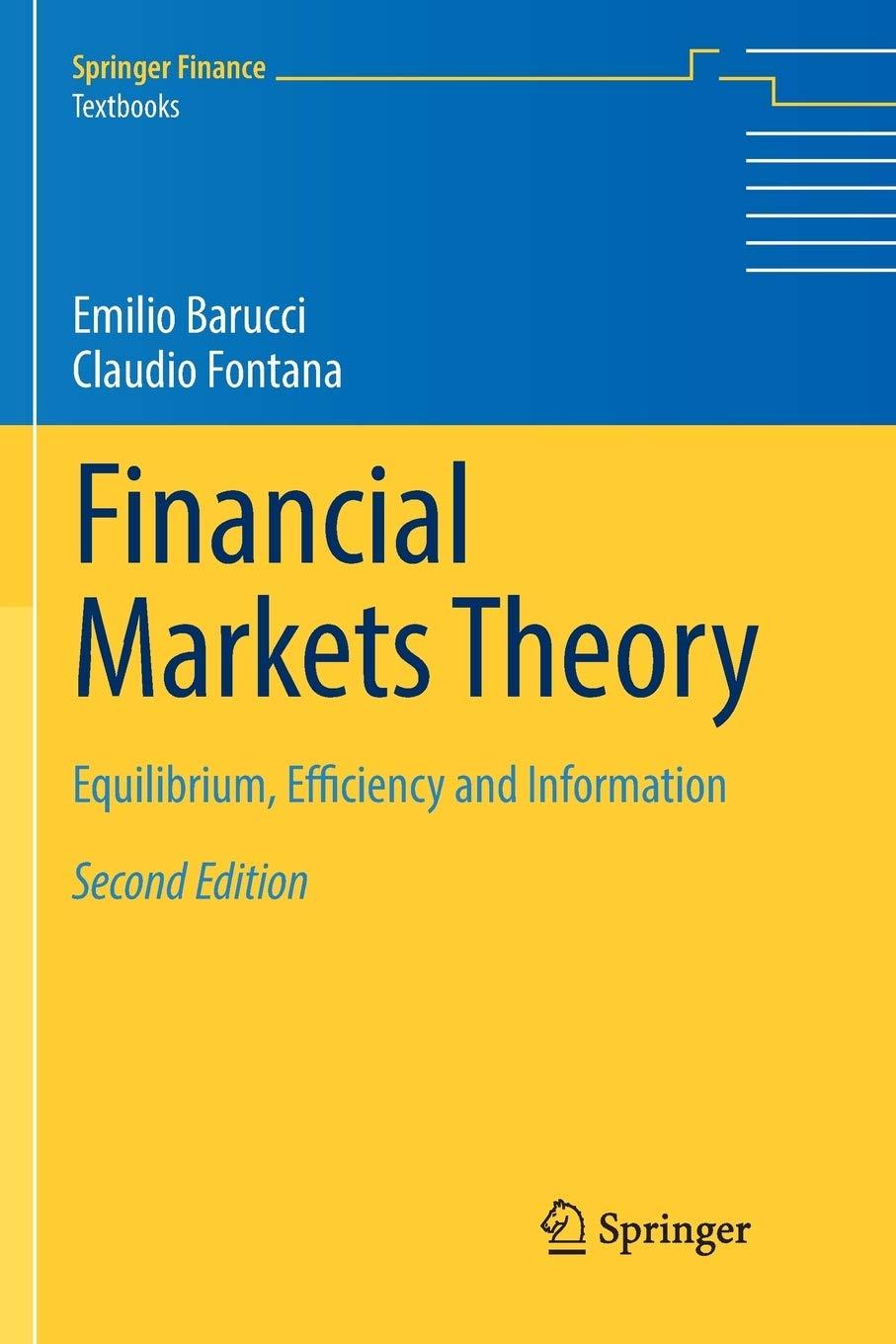(Hens & Rieger [938], Theorem 2.30) Suppose that the expected utility function (mathbb{E}[u(tilde{x})]) of a risk averse...
Question:
(Hens \& Rieger [938], Theorem 2.30) Suppose that the expected utility function \(\mathbb{E}[u(\tilde{x})]\) of a risk averse agent can be represented through a continuous mean-variance function \(V\left(\mathbb{E}[\tilde{x}], \sigma^{2}(\tilde{x})\right)\), strictly increasing with respect to the mean and strictly decreasing with respect to the variance. Then, there exist two random variables \(\tilde{x}_{1}, \tilde{x}_{2}\) such that \(\mathbb{P}\left(\tilde{x}_{1} \geq \tilde{x}_{2}\right)=1\) and \(\mathbb{P}\left(\tilde{x}_{1}>\tilde{x}_{2}\right)>0\), but \(\mathbb{E}\left[u\left(\tilde{x}_{1}\right)\right]<\mathbb{E}\left[u\left(\tilde{x}_{2}\right)\right]\).
Step by Step Answer:

Financial Markets Theory Equilibrium Efficiency And Information
ISBN: 9781447174042
2nd Edition
Authors: Emilio Barucci, Claudio Fontana





